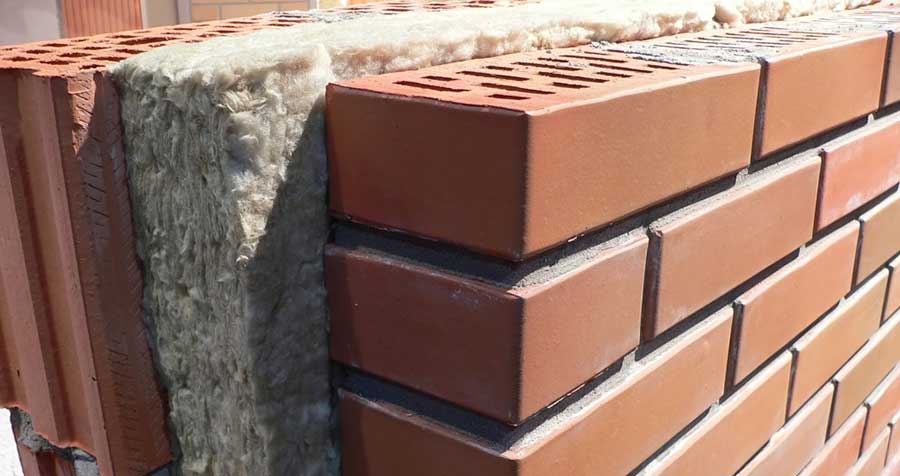What do design professionals need to know about U-value calculation conventions?
Contents |
[edit] Introduction
BRE Report (BR) 443 conventions for U-value calculations is a document produced by the Building Research Establishment in the UK. As its title suggests, the report details best practice that should be followed by anybody carrying out U-value calculations for building elements.
Any design professional performing their own U-value calculations should already be familiar with BR 443 and be applying its conventions. If you obtain calculations elsewhere, however, such as from a consultant or an insulation manufacturer, what do you need to know about the document?
[edit] What type of document is BR 443?
It is not a European Standard, like the ones that detail actual calculation methods for thermal transmittance. Nor is it a British Standard or code of practice.
Nevertheless, BR 443 carries weight in UK construction. It is a widely used and referenced document, recognised as essential to providing accurate U-value calculations.
[edit] What is in BR 443?
Another thing that BR 443 is not is an explanation of calculation procedures. The document does not describe how to do U-value calculations. Instead, it gives dimensional and performance data about common UK construction materials and methods.
Using BR 443, people who carry out U-value calculations can represent those materials and construction methods consistently, ensuring the industry generally benefits from accurate calculations.
BR 443 contains a wealth of supporting guidance about applying the data, meaning users of calculation software can make informed decisions about inputs into calculation software.
There are also checklists for common building elements covering different factors that need to be taken into account when calculating a U-value for that element.
[edit] What is the current version of BR 443?
BR 443:2019 is the current edition. It was published in early 2021, replacing the 2006 edition. The 2019 document is approximately double in length compared to its predecessor, providing more useful information for readers and significantly expanding some sections (such as section 11 about windows and glazed elements).
A small amount of previous guidance has been removed but, for the most part, the data provided for use in calculations have remained the same. The biggest difference is in the quantity of supporting information.
Traditionally, BR 443 was free to download, but the 2019 edition has to be paid for. As the 2006 edition is still available online, anyone searching for the document should satisfy themselves as to which version they have accessed.
[edit] Do design professionals need to know BR 443 in depth?
Technically, no. The main thing is to be satisfied that whoever is providing calculations for your projects knows BR 443 and is working to its conventions. There are some reasons why having an understanding of its contents could be beneficial, however.
Awareness of common material data, or factors that impact on the thermal performance of building elements, could help to inform design decisions or material specification choices. By factoring that awareness into projects at an earlier stage, it could make it more likely that design intent is realised later on.
By contrast, late design and specification changes to compensate for different thermal properties can lead to compromises being made.
Another reason is that when receiving calculations from a third party, such as a consultant or product manufacturer, it’s possible to read those calculations, understand the data that has been used, and ask any questions about the correct representation of your design.
Trust that the third party is working to current conventions is important, but being satisfied that you have communicated your design correctly and that it will help to achieve the goals of the project is equally critical.
This article originally appeared in the Architectural Technology Journal (at) issue 138 published by CIAT in summer 2021. It was written by Rob Firman, Technical and Specification Manager, Polyfoam XPS. Polyfoam XPS provides extruded polystyrene solutions for ground floor and flat roof build-ups. Visit polyfoamxps.co.uk for technical advice and U-value calculations that apply the conventions of BR 443, or to subscribe to our monthly newsletter, The Build-Up.
--CIAT
[edit] Related articles on Designing Buildings
Featured articles and news
Professional practical experience for Architects in training
The long process to transform the nature of education and professional practical experience in the Architecture profession following recent reports.
A people-first approach to retrofit
Moving away from the destructive paradigm of fabric-first.
International Electrician Day, 10 June 2025
Celebrating the role of electrical engineers from André-Marie Amperè, today and for the future.
New guide for clients launched at Houses of Parliament
'There has never been a more important time for clients to step up and ...ask the right questions'
The impact of recycled slate tiles
Innovation across the decades.
EPC changes for existing buildings
Changes and their context as the new RdSAP methodology comes into use from 15 June.
Skills England publishes Sector skills needs assessments
Priority areas relating to the built environment highlighted and described in brief.
BSRIA HVAC Market Watch - May 2025 Edition
Heat Pump Market Outlook: Policy, Performance & Refrigerant Trends for 2025–2028.
Committing to EDI in construction with CIOB
Built Environment professional bodies deepen commitment to EDI with two new signatories: CIAT and CICES.
Government Grenfell progress report at a glance
Line by line recomendation overview, with links to more details.
An engaging and lively review of his professional life.
Sustainable heating for listed buildings
A problem that needs to be approached intelligently.
50th Golden anniversary ECA Edmundson apprentice award
Deadline for entries has been extended to Friday 27 June, so don't miss out!
CIAT at the London Festival of Architecture
Designing for Everyone: Breaking Barriers in Inclusive Architecture.
Mixed reactions to apprenticeship and skills reform 2025
A 'welcome shift' for some and a 'backwards step' for others.























